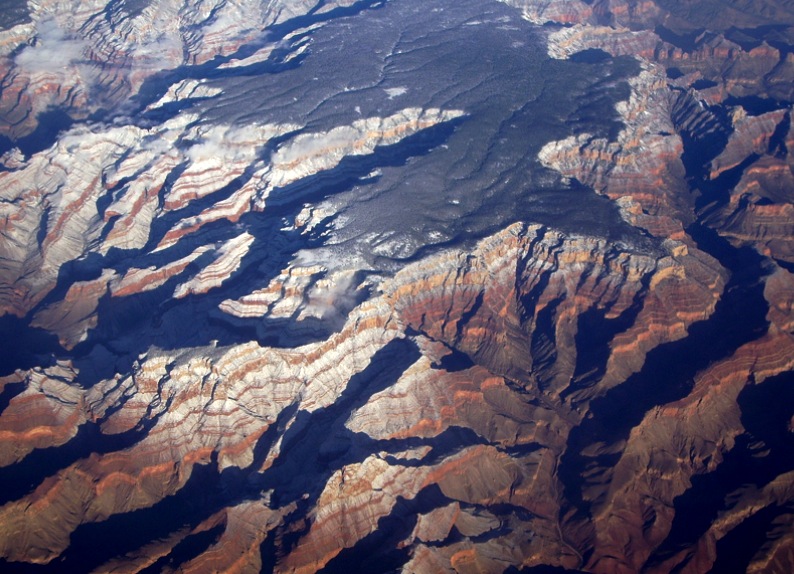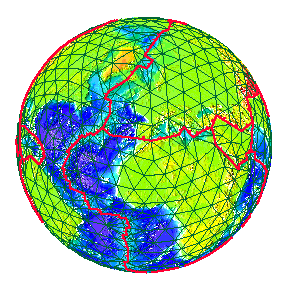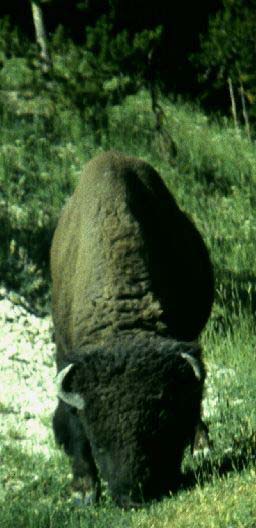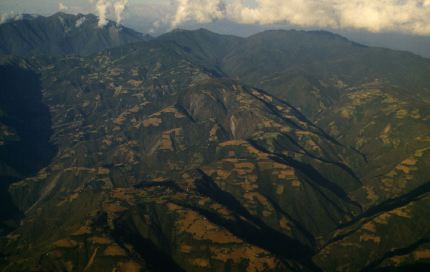Conservation of Natural Resources is a concept that represents hanging target now because of global warming, habitat loss or fragmentation, the consequent decline in biological diversity and eradication of indicator species.
 For nearly a century now,
Americans have provided a national, legal framework for the identification,
inventory, management and use of forests, rivers, minerals, wildlife
and fisheries. To examine current ecological practices
that shape policies for the protection and long-term development
of renewable and non-renewable necessities, ecological design principles are necessary to comprehend.
For nearly a century now,
Americans have provided a national, legal framework for the identification,
inventory, management and use of forests, rivers, minerals, wildlife
and fisheries. To examine current ecological practices
that shape policies for the protection and long-term development
of renewable and non-renewable necessities, ecological design principles are necessary to comprehend.
Industrial practices
and urban growth have demanded that common property resources and the natural features these embody be managed for the maximum
benefit of the national interest. These exercises are intended to highlight
conflicts today, and in the past, between competing views of the
national interest in wildlife.
Wildlife ecology is recognized
today as an indicator of the health of our natural resources.
- Here weal as an acronym for the inanimate condition of an ecological system that is the source of natural wealth on which wildlife an fisheries depend,
- WEAL
for example
Grand Canyon

 Texts to read and take
notes from are numerous so start here.
Texts to read and take
notes from are numerous so start here.
Goals:
Involve students in an active discussion of local conservation
efforts in view of the readings, class activities and research.
Offer participants a chance to learn to use the internet and
contact local and state conservation action organizations.
To define orally and in writing the ecological problems associated
with defining and judging conservation efforts now and after the
class is over.
Expose participants to at least one local area’s natural
features that promote an awareness of and the need to conserve
water, energy, air and landscape features for wildlife.
While computer skills are not required for the successful
completion of this class, the
instructor recommends your using of computer programs, e-mail,
and the World Wide Web, become commonplace because people with
computer skills have a higher earning potential.
 Calendar
Calendar
Dates Subject or Activity readings
due before that class.
Clarify
Ecological Problem Solving, Cox 101-146, Hudson ix -39, Leopold
6-19, 137-140
workshop on wildlife
Sustaining Local Needs, Cox 243-257; Leopold 101-124; Hudson
117-140
"the Design Process"
Organize
Land (Biogeo connections) Hudson 40-116, Leopold 58-69, 177-187
turn in interviews (copy) typed summaries, double-spaced, 5
page minimum
Water (Hydro marine relations) Leopold 158-163, 188-236; Cox
147-218
Cycles (Acid Rain Problem) Cox 219-242; Leopold,3-5, 19-36,
44-55
Reflect
"The Land Ethic"
Leopold 237-263; Cox 258-267
"Conservation Aesthetic" Leopold 70-82,164-168, 280-295;
Cox 268-299
Designing Natural Preserves, Leopold 264-279, Hudson 162-180,
Cox 300-310
site survey and habitat protection goals for natural areas.
Asking questions and getting answers Cox 23-100; Leopold 150-158
propose three questions and draft answers from the texts
Evaluate
What is it we do not know? Leopold 83-98,
read your drafts of the tentative answers to the 11/20 questions
5/8 Final Exam, oral reports on your chosen preservation
imperative.
Clarify
Introduction: what is our role in conservation and ecology?
Identify the problem & give your response 
Conservation is the long term protection of natural
resources whose ecological functioning is necessary to the future
survival and benefit of the greatest number of people.
Practiced by the Indian Emperor Ashoka in the 3rd century B.C.,
conservation remains centered on the land, vegetation, wildlife
and water in the modern world. Conceived as a national comprehensive
policy for systematic protection of watersheds by William John
McGee and Gifford Pinchot in the 1900s, conservation is a policy
of the Federal and state governments to promote the best practices
in managing forests, fisheries, wildlife, water, minerals and
soil.
Gifford Pinchot, a close friend of President Theodore Roosevelt
(1900-1909), once defined conservation as a policy goal to "promote
the greatest good for the greatest number for the longest time."
This is also known as utilitarian conservation.
Due to the vision of Roosevelt, Pinchot and McGee, Pelican
Island national wildlife refuge in the Indian River Lagoon and
the Ocala National Forest exist today as example of the national
commitment to wildlife and timber reserves. These are tangible
biotic assets.
Conservation ecology, argues George Cox, of San Diego
State University, "is a field that is partly basic and partly
applied. Its foremost goal is to obtain and apply the knowledge
necessary to conserve and manage biotic diversity for the benefit
of humanity…. Thus the key goal of conservation ecology is
to find ways both to gain scientific knowledge and apply it to
the protection and wise use of biotic diversity." (4)
Literally, conservation means to keep from harm, damage,
or decay. A conservator is anyone who practices the arts and sciences
of protection, restoration and renewal of either natural (ecological)
or cultural (social) resources.
Questions to consider for next week:
- What is an ecosystem and why is it important?
- What features of any natural area are of primary significance?
- What demands do you make on the natural world?
- What do animals and plants tell us about the Landscape?
- What is education?
- What is Landscape ecology?
Organize
WEAL & Wildlife, the
necessary connection
Weal as a root word and
as an acronym:
weal Anglo- Saxon -- Germanic word for
forest (wald)
weal stands
for water -- energy -- atmosphere -- landscape
Weal is the abiotic
features and transition milieu that all living things need.
water surface and underground
energy sunlight, geothermal, tides &
wind
air nitrogen, oxygen, and carbon dioxide
land transition milieu from rock to
soil (a living tissue)
W stands also for wildlife
Wildlife - the animals:
fauna; birds, reptiles, amphibians, mammals, insects
characteristic of a particular place, bioregion, and biome (Nearctic
realm) functioning together in an ecological system of cycles
and dependencies constitute the assembly of moving parts of the
biological engine of wealth are indicators of the functional
integrity & nutrient flow in any place.
isolate the problem define
the component parts your problem and consider these types of species role in defining what matters are at stake in the problem.
sentinel species indicate the risks in a
place:
panthers, red-cockaded woodpeckers, scrub jays.
keystone species provide shelter for others:
sea otters, alligators, beavers, gopher tortoises, urechis marine worm.
top level predators
limit populations:
pumas, jaguars, eagles, sharks, wildcats, panthers,
big-game hunted for trophies to display, conspicuous consumption:
deer, elk, moose, bison,
grizzly bears, tarpon, sailfish, marlin, rhinoceros, elephants, tigers.
non-game species not hunted, not trophies:
opossum, bats, manatees, turtles, coyotes, wolves, armadillos.
"charismatic species"
attract people’s sympathies:
otters, pandas, cougars, lions, tigers, elephants, polar bears, Koalas, kangaroos.
Ecological Problem Solving, Cox 101-146, Hudson ix -39, Leopold 6-19, 137-140.
workshop on wildlife Olympic
National Forest & Park: Good Neighbors?

1: Temporal considerations:
What is the importance of
time?
Make a personal time line
of important events in the past relating to wildlife:
2: Assessing Problem
Solving
What is the intrinsic or
inherent value of any animal? Of wildlife?
What do we use animals for?
How useful are they to us?
Pick an animal and describe
its life cycle, place on the food chain and ecological function:

3: Spatial importance:
measure a particular spot
& record the dimensions:
What is an acre? What percentage
of an acre did you measure?
What is a square mile? How
many acres does it contain?
Write a short essay explaining
Gap analysis and the significance of it for maps.
4: How has your understanding
of ecology and conservation changed?
Define, clarify and organize the problem you
are looking to solve.
Now examine conflicts within
conservation’s aims and objectives, such as game protection versus non game wildlife habitat preservation.
Examine
Define a local conservation
problem
identify the
- physical
- biological
- social boundaries that delimit & constrain
the case.
What are the leading issues?
How would Leopold respond?
Enduring Lessons:
- We can never possibly know
enough before we act.
- All side effects are effects
in that they have real consequences.
- Conservation as a learning
process requires honesty, humility, & correction.

Himalayan
deforestation

 For nearly a century now,
Americans have provided a national, legal framework for the identification,
inventory, management and use of forests, rivers, minerals, wildlife
and fisheries. To examine current ecological practices
that shape policies for the protection and long-term development
of renewable and non-renewable necessities, ecological design principles are necessary to comprehend.
For nearly a century now,
Americans have provided a national, legal framework for the identification,
inventory, management and use of forests, rivers, minerals, wildlife
and fisheries. To examine current ecological practices
that shape policies for the protection and long-term development
of renewable and non-renewable necessities, ecological design principles are necessary to comprehend. 
 Texts
Texts


